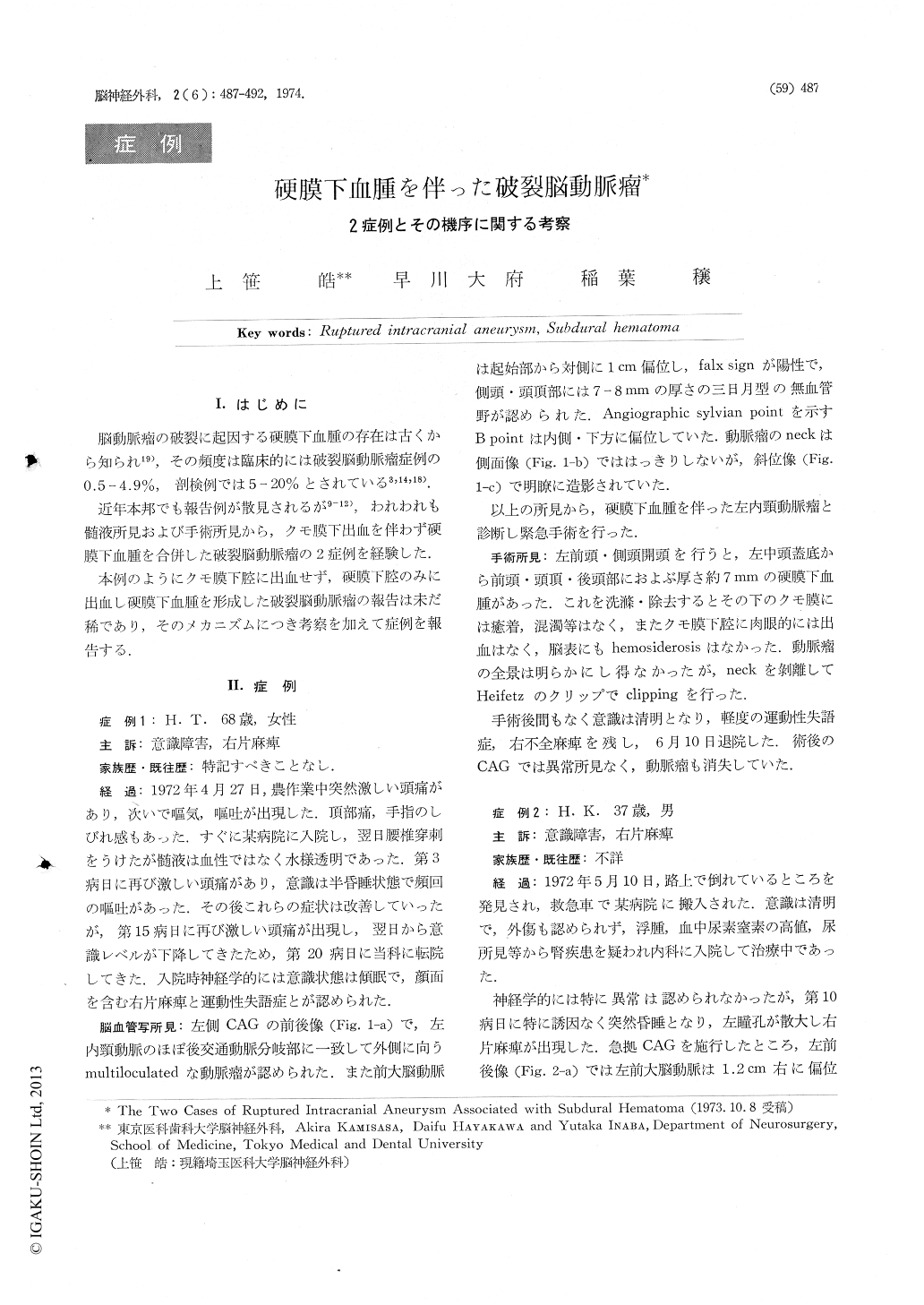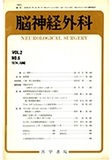Japanese
English
症例
硬膜下血腫を伴った破裂脳動脈瘤—2症例とその機序に関する考察
The Two Cases of Ruptured Intracranial Aneurysm Associated with Subdural Hematoma
上笹 皓
1
,
早川 大府
1
,
稲葉 穣
1
Akira KAMISASA
1
,
Daifu HAYAKAWA
1
,
Yutaka INABA
1
1東京医科歯科大学脳神経外科
1Department of Neurosurgery, School of Medicine, Tokyo Medical and Dental University
キーワード:
Ruptured intracranial aneurysm
,
Subdural hematoma
Keyword:
Ruptured intracranial aneurysm
,
Subdural hematoma
pp.487-492
発行日 1974年6月10日
Published Date 1974/6/10
DOI https://doi.org/10.11477/mf.1436200205
- 有料閲覧
- Abstract 文献概要
- 1ページ目 Look Inside
Ⅰ.はじめに
脳動脈瘤の破裂に起因する硬膜下血腫の存在は古くから知られ19),その頻度は臨床的には破裂脳動脈瘤症例の0.5-4.9%,剖検例では5-20%とされている3,14,18).
近年本邦でも報告例が散見されるが9-12),われわれも髄液所見および手術所見から,クモ膜下出血を伴わず硬膜下血腫を合併した破裂脳動脈瘤の2症例を経験した.
Two cases of ruptured intracranial aneurysm complicated by subdural hematoma were reported and the relationship between the ruptured aneurysm and the formation of subdural hematoma was discussed.
In case 1 (Fig. 1 & 3), bloody CSF was not proved by lumbar puncture. Reasonable cause for this case may be speculated that the aneurysm has its neck at the cisternal portion of the left internal carotid artery and the lobulated bottoms are adherent to the arachnoid and/or buried in the temporal lobe following the first subarachnoid bleeding.

Copyright © 1974, Igaku-Shoin Ltd. All rights reserved.


